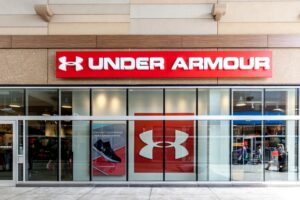
Photo: RetailWire
February 13, 2017
How price competitive does Whole Foods need to be?
Whole Foods Markets, reporting its sixth straight quarterly decline in same-store sales, is apparently finding its “Whole Paycheck” reputation tougher to shake now that organic offerings are widely available across retail at lower prices.
“Does Whole Foods need to be the cheapest or least expensive retailer out there? No. But we also can’t have too big of a gap or people will feel like we’re trying to take advantage of them,” said CEO John Mackey on a conference call last week with analysts. “So we are very conscious of pricing and, in some cases, when we have a particularly strong quality advantage, the gap might be a little larger. But if they’re selling the exact same items and exactly the same brands, we feel like we really need to be competitive on those prices.”
The grocer reduced its sales forecast for the year, announced the closing of nine locations and a slowing of new-store development. Its goal of opening 1,200 plus stores was dropped.
The company plans to “double down on focusing” on its core customer — “the Whole Foodie customer” — that is still shopping its store. As part of that effort, Whole Foods announced a partnership with dunnhumby to accelerate its category management efforts. Stated Mr. Mackey, “If these customers add just one more item per trip, the sales potential is significantly greater than with any other segment.”
Further price investments will continue, and the company is looking for ways to reduce costs, including introducing self-service in departments such as pizza and bakery that don’t impact the shopper experience.
One challenge Whole Foods faces is that conventional grocers allegedly use lower standards to bring down their prices in organics. Whole Foods’ dedicated consumers, however, will be watching its commitment to quality closely.
“If you’re a publicly traded corporation, you have no choice but to maximize short-term profits,” Ronnie Cummins, the co-founder of the Organic Consumers Association, told The Washington Post. “But we are going to be complaining to Whole Foods if they decrease their quality to keep up with the competition.”
- Whole Foods Market Reports First Quarter Results – Whole Foods
- Whole Foods Market Selects dunnhumby to Help Lead Customer Driven Merchandise Strategy – Whole Foods
- Whole Foods Market (WFM) Q1 2017 Results (Earnings Call Transcript) – Seeking Alpha
- Analysis: Why Whole Foods is now struggling – The Washington Post
- Whole Foods says it’s focusing on price because no one wants to feel ‘cheated’ –MarketWatch
- Whole Foods launches Dunnhumby partnership, trims growth forecast – Supermarket News
Discussion Questions
DISCUSSION QUESTIONS: Is Whole Foods’ quality message getting lost with consumers? Does Whole Foods need to match prices with conventional grocers in staple categories?
Poll
BrainTrust
Bob Phibbs
President/CEO, The Retail Doctor
Recent Discussions







It is not necessarily about price but value. People have no problem paying more when they perceive they are getting more. In the case of Whole Foods, there is a bigger disparity between the price and the perceived value. Whole Foods can combat this in several ways but there are two that I would recommend. First is their assortment. Whole Foods has always been known to carry interesting items that are not easily found elsewhere. People will pay more for a well-curated and unique experience. Speaking of experience, that is the second strategy. How can Whole Foods differentiate on the shopping experience compared to other retailers? They have a foodie and healthy culture that they can tap into. Unlike other grocery retailers they have a real community around them. What can they do in-store to exploit this further? Their core customers would pay a premium for a tailored experience.
This is really a research question; if they lower their prices on staple items do sales increase? While I’m sure there are some shoppers who buy almost all their stuff at Whole Foods, I’m betting that’s a pretty small group. For the rest of us, yes, prices need to be somewhat in line with traditional grocery, but what “somewhat” is needs to be researched.
For gosh sakes, just own your products, cost more and stop trying to be both a luxury grocery store and “for the people.” If you do, you won’t use discount offers for Groupons customers which is a whole different customer base than the ones who built you. Add more luxury and service. I must say, the Whole Foods I visited recently in Downtown LA didn’t feel very upscale, it was packed and the aisles were confusing. Talk less, do more. Pick a side and run with it.
I do not see the issues Whole Foods is facing as a price issue. Nor do I see the issue as one of organics becoming mainstream. I see the problem as Whole Foods has stopped innovating and creating.
Whole Foods had a loyal customer base for years who were the organic shoppers. But they also had the young “fill-in” shopper and the high-value lunch and dinner meal shopper. Those are the shoppers they are losing quickly. Why would I go to Whole Foods to shop today? It is boring. There is nothing happening in those stores any longer. They used to be fun and ever-changing. But their perishable offering in prepared foods is old and has not changed in years while the world of fast-casual restaurants around them has. Bakeries, meat, seafood and produce have not introduced a new concept in almost a decade. Perishables is what made that company and attracted not just the hardcore organic shopper, but the lunch and dinner shopper as well.
Does price play a part? Certainly when you are carrying brands that everyone else is carrying. Can you get a slight premium? Sure. Is the quality of your organic perishable offering better and more credible than competitors? Sure. Is that enough to keep up the momentum? No it is not.
Organics has become more mainstream, no question. Price has always been a factor and will be forever. But I went into a Whole Foods the other day and what I saw was a store that has not changed in 15 years. It was dull and lacked life, just like an ordinary grocery store. In my mind, that is the core problem. They are asleep and missing some important shopping and eating trends.
Whole Foods should emphasize its local, unique offerings, not try to compete on price with other grocers. A price war would simply confirm the company’s Whole Paycheck image. Their stores are different. Celebrate the difference. Don’t try to be the other guys.
Whole Foods has never been very adept at keeping prices low on easily recognizable and available items while keeping them high on their unique foods, vitamins, etc. I don’t usually call technology a panacea but, in this case, I am hoping rolling out new technology helps them get better at this. When seltzer cost 50 percent more at Whole Foods than Publix (same brand … same everything), even though it’s short money, you notice.
Value is becoming more widely defined in retail, and it differs even more widely among consumers — from week to week and experience to experience on the micro level. When retailers define their brand and operate within a range of defined value, smooth sailing can be expected. Moving outside of this makes the waters choppy and the winds of success uncertain. Whole Foods should stay the course unless consumers tell them to do otherwise. Beware the consumer who declares that they want everything. Retail success lies in the proportion of value elements.
Anecdotally, I’ve heard from several Whole Foods shoppers that they are switching to Aldi and they are quick to point out huge price disparities. And I read that Aldi is investing heavily in new store layouts focused on organics and is aggressively adding stores. With this being just one competitor, I would say Whole Foods has a lot of problems on its hands to turn things around.
As you all know I am not the grocery shopper in my family, however this looks like a retail 101 question. What are the top 10 percent of your customers buying? If I were to guess, the top 10 percent at Whole Foods are buying their highest quality products. After all, Whole Foods falls into the luxury brand category. To me, that is. They will grow by giving their top customers more of what they want, not by lowering their standards to hopefully appeal to a broader market.
As for matching prices with conventional grocers? Only if they sell the same product, and I really recommend that they NOT do that.
I was just watching Top Chef and, of course, they did all their shopping at Whole Foods. They didn’t go there for the best prices, they went there for the best quality and unique variety. So Whole Foods, play that up and take it to the bank.
For my 2 cents.
Whole Foods is justifiably seen as overpriced in my experience. But I think part of their problem is they structured the company in an earlier day when they could demand and maintain those higher prices. Now there are mid-range competitors like New Seasons on the West Coast who offer same quality, a better shopping experience and generally lower prices. And now our local Kroger chain offers better organic fruit and vegetables at lower prices.
I expect we have a few years of struggle ahead for Whole Foods while they attempt to wean themselves off of a business model based on higher margins than today’s market competition will allow them.
Oh. To answer the question? Yes. They have a high price problem. But it’s not going to be an easy fix since I expect the company is structured around the margins those prices brought.
Yes, and match the value. The whole movement is coming to an end soon so people will have healthy food and part of their paycheck left over. Even my Millennial kids do not shop there due to the low value they get out of each dollar. They are health nuts but not brandwashed.
Whole Foods has pretty much lost its meaning. I find it hard to define what it stands for these days. There’s plenty of competition in the healthy, natural, organic retail market in the Charlotte area, including Earth Fare and even Aldi. Perhaps in addition to new technology, this is a company that can benefit from a re-do of brand architecture and positioning that includes points of parity as well as points of distinction. Right now they seem to have a cloudy vision and are therefore talking from both sides of the mouth.
Focusing just on price is myopic. Who is the core customer? What do they want? Focus on getting the assortment, quality and value right. Then make the price competitive and reasonable. Then create messages that emphasize the value you provide, such as strict standards for ingredients.
Whole Foods’s differentiation on quality resonates with a decreasing segment of the food shopping world. For the rest, they don’t see a difference between organic at Kroger or at Whole Foods; that is a problem when you charge more for undifferentiated products or experiences. Whole Foods cannot succeed in sufficiently educating the consumer on the quality message to counter sales erosion.
If Whole Foods wants to profitably grow again, then I suggest they consider investing significantly more in their 365 Stores as a value-based format for foodies on a budget, while simultaneously addressing their out-of-phase cost structure established long ago when the organic food shopper represented a niche segment.
Their other alternative is to go more upscale. It would mean giving up on improving comp stores while focusing on margin expansion. The 365 Stores would no longer be part of such a strategy which would place greater emphasis on new and exciting products and experiences in their current stores while keeping their price points up.
Mr. Mackey and the Board need to make and commit to a singular and clear strategic direction and go all out to execute. Within that strategic choice you can do all the experimenting you want, but don’t mix efforts in mutually exclusive and competing strategies.
Warren Buffet once said, “price is what you pay, value is what you get,” and I think most American consumers don’t really understand that. That’s why there’s such a thing as a “value meal” for 99 cents that’s absolute junk — and it sells! Excellent, healthy food is key to helping us solve our obesity and sickness woes and Whole Foods is the #1 purveyor of said product. However, the challenge WFMI faces in terms of perception is real, especially when it comes to the average American consumer. But in my mind, it’s more about education than it is about price. They may have reached the limit in terms of how far they can push their concept into the mainstream until that is solved.
Besides, it’s not only price for Whole Foods. In some of their largest markets, like California and Colorado, the consumer is potentially a 4th generation health food eater. To them, Whole Foods is like a traditional grocer — so they’ve migrated on to much more intense competitors that take health food to a level beyond where they are. The combo of the two aforementioned problems is the issue for Whole Foods. It’s not an easy solve, but one I feel they will overcome. They’re just too good not to turn it around.
Whole Foods needs to be more price conscious while balancing a superior customer experience. The sticker shock you feel at the checkout counter is legendary, and has led to the “Whole Paycheck” reputation. While the company has made steps at becoming slightly more affordable with their 360 label, there is a long way to go before it becomes a store for the “people.” They are clear market leaders in the organic category, yet growing families with young children struggling to make ends meet may not be able to take full advantage of their healthy offerings. Strategically, I do agree that the area they need to be more price conscious with are with the grocery staple items. Another approach they should consider is to increase the value and experience with the mobile app.
When my family and I shop there, the promotions and sale items are few and far between. There is not semblance of a loyalty program, and there are many occasions where I leave saving nothing. Having obscure items on sale, does nothing to promote customer loyalty, a sense of community, and a long term relationship. Whole Foods has their loyal customers, and we want and desire an improved relationship outside the organic and locally sourced products,
I don’t know if it is getting lost or if it’s simply under attack. Foodies have been critical of Whole Foods for not being “pure” enough — a problem with any business that is selling “purity” as part of its brand. What may be getting lost is the notion of differentiated quality — why my purity is purer than yours. As to price, they may need to be closer, but they don’t have to match. Their customer isn’t motivated by price, unless they are facing insult pricing.
While it is true that other grocers are stocking more organics at lower prices than Whole Foods, the latter does not have to overreact. Whole Foods has tremendous brand power. Act like the leader. Be competitive on price, but promote value. My hunch is that dunnhumby will help Whole Foods in a big way.
Whole Foods needs to overcome the reputation of being the most expensive option.
Perhaps Whole Foods has to determine what they want to be when they grow up. If their objective is to bring on another 100 to 500 Stores over the next 5 years, they may be a bit ahead of themselves in looking at the operation as a complete grocery experience for Consumers.
We looked at the 25 reasons why consumers shop a particular grocer MOST often within the Monthly Prosper Consumer Survey. In making a comparison to a Wegmans, for example, 17.4% of Whole Foods shoppers maintain they visit them MOST for price, while 67.5% of Wegmans’ shoppers point to price. Price is called out by 74.1% by all other adults for their grocer of choice.
Whole Foods narrowly tops Wegmans in mentions of quality (87.4% vs. 78.7%), Fresh produce (61.7% vs. 56.4%), and sharply on organics (66.2% vs. 33.7%). In all other areas of reasons to shop MOST, Wegmans leads the way as a complete grocer — selection, service, trustworthy retailer, in-store experience, meat department, store appearance, store layout, bakery, one-stop shopping, prepared meals, wide aisles, etc.
Whole Foods, which is a fascinating concept and does have excellent quality is not ready for broad prime time. Fix more than price if the plan is to grow into one of the largest chains in the country.
Many BrainTrust members have nailed the problem for Whole Foods, and it’s not all about price. It’s about not evolving over time — the stores are largely the same as they’ve been for a very, very long time. Whole Foods was frankly one of the earliest purveyors of an “eat well, live well” lifestyle. They were not just a grocery store that sold organic food — they sold a healthy living lifestyle. Curious that with all the commentary here, almost no one has mentioned this! That tells me Whole Foods has lost their identity and are spending too much time worrying about price. Yes, everyone has always thought they have high prices. But in my area, everyone also knows that Safeway and many other retailers are high priced. That doesn’t stop them from shopping there if they like the value (and product mix) they get from the store! Maybe they should look towards Trader Joe’s for an example.
Should Whole Foods drop prices on common items you can buy anywhere? Yes! but they should keep their focus on quality foods, especially prepared foods, to drive higher basket size. I used to be one of those shoppers that bought their prepared foods frequently, but honestly cannot remember the last time I did so.
There’s no secret what you receive at a Whole Foods: a great shopping experience and quality food at a premium price. Shoppers are showing with a healthy skinnying-down of their purchases that the value they perceive is not justifying the prices they are paying. Since no company, public or private, can indefinitely withstand a loss in same store sales, an adjustment is in order which should include a review of pricing, inventory and service. They need to find the features and products that consumers will pay a premium for and which they will not. The great experience offered at Whole Foods has value but the consumer is showing that the price may be too steep.